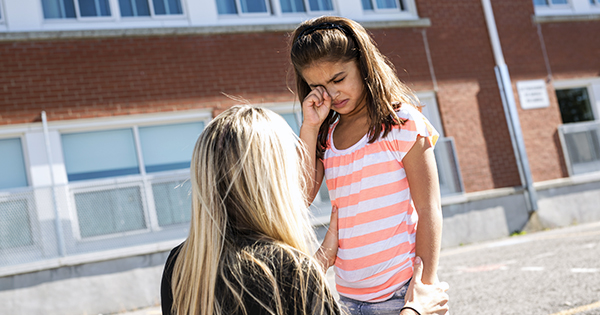
School shootings. Tornadoes. Floods. Neighborhood violence. Abuse. It’s estimated that 26% of our nation’s children will witness or experience a traumatic event before they turn four (1). When students face trauma and tragedy, educators need practical resources to facilitate difficult discussions and support their learning communities. Here are some powerful resources for teaching and counseling through tragedy for educators on the front lines.
Facing death
TeachHub produced this simple guide to support students who are dealing with the loss of a loved one. It features some basic steps for classroom teachers to follow in order to best support students through loss.
The National Association of School Psychologists shared this helpful resource that shines a light on the effects of grief in both young children and high school students entitled Helping Children Cope With Loss, Death, and Grief – Tips for Teachers and Parents.
The American School Counselor Association produced the downloadable article Help for Grieving Students, which provides helpful information about the needs of grieving students.
Facing violence
The Center for the Study of Traumatic Stress (CSTS) put together Restoring a Sense of Safety in the Aftermath of a Mass Shooting: Tips for Parents and Professionals, which helps school personnel and parents recover after experiencing community violence.
The National Institute of Mental Health published a free and downloadable booklet titled Helping Children and Adolescents Cope with Violence and Disasters: What Parents Can Do. It notes the signs to look out for when students experience traumatic violence or disaster, as well as helpful tips for guiding students through traumatic stress.
The National Education Association’s Healthy Futures published the free and downloadable School Crisis Guide to “foster the creation of crisis teams with the ideas, tips, tools, and resources that spur effective leadership and crisis management.” With a very useful timeline of crisis-management steps, the booklet details how to cope with tragic events immediately as they happen and afterward.
Kidpower produced a very helpful article for educators on the steps to take if a child reports abuse or violence. While individual states have specific laws mandating how educators handle such confessions, this article provides a basic overview of how to handle these sensitive situations. What to Do If A Child Reports Possible Abuse, Bullying, Harassment, or Anything Else That Bothers Them.
Facing homelessness
The Wisconsin Department of Public Instruction has shared a simple resource, How Teachers Can Help Students Who Are Homeless, that includes quick yet impactful ideas for supporting homeless students in the classroom.
Teaching Tolerance’s article Helping the Homeless In School and Out details ways educators can assist students and families experiencing homelessness. “Homeless kids can be hard to identify and even harder to help. But teachers can do a great deal to make sure that they don’t fall through the cracks.”
Facing natural disasters
Bright Horizons published What Happened to the World, a guide that offers advice to educators and parents of children who are traumatized or displaced by a natural disaster or local tragedy.
The National Association of School Psychologists also provides resources for educators to guide students through post-traumatic stress after natural disasters. Check out Helping Children After a Natural Disaster: Information for Families and Educators.
The Center for the Study of Traumatic Stress (CSTS) published Teacher Guidelines for Helping Students after a Hurricane, which details possible student reactions to the trauma and displacement that may occur after a hurricane, as well as ways teachers can help.
Categorized as: Tips for Teachers and Classroom Resources
Tagged as: Teacher-Parent Relationships, Teaching Impact, Trauma and Resilience
